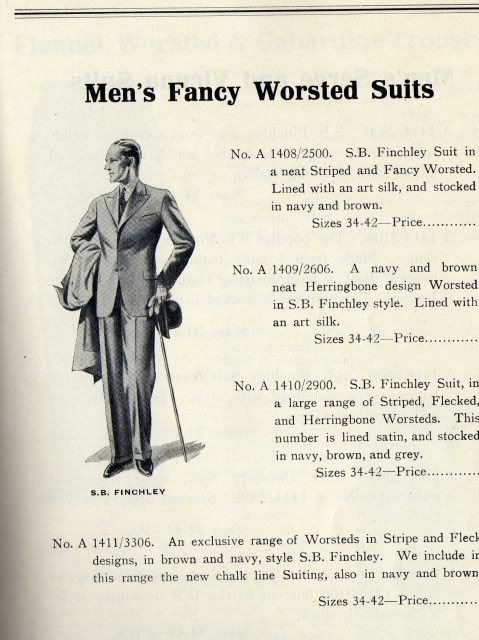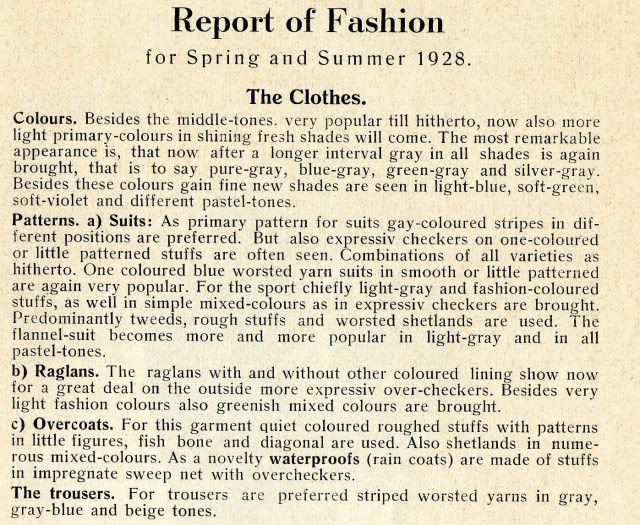Feraud
Bartender
- Messages
- 17,188
- Location
- Hardlucksville, NY
Actually the availability of color is not really a curiosity nor extra-ordinary at all in meanswear as shown in the '27 plates and forward.Evan Everhart said:Indeed, the coloured fashion plates of 1927, accordingly are rather appealing and interesting as almost a curiosity accordingly as so much of the colour of men's wear till then and since has been coloured exclusively by dark blues, dark browns, grays (mostly dark), black, and dark green pared with white shirts. Most extra-ordinary.
Please review the stickies at the top of the Suit room. I guarantee it will be a learning experience. Good show all, carry on.











